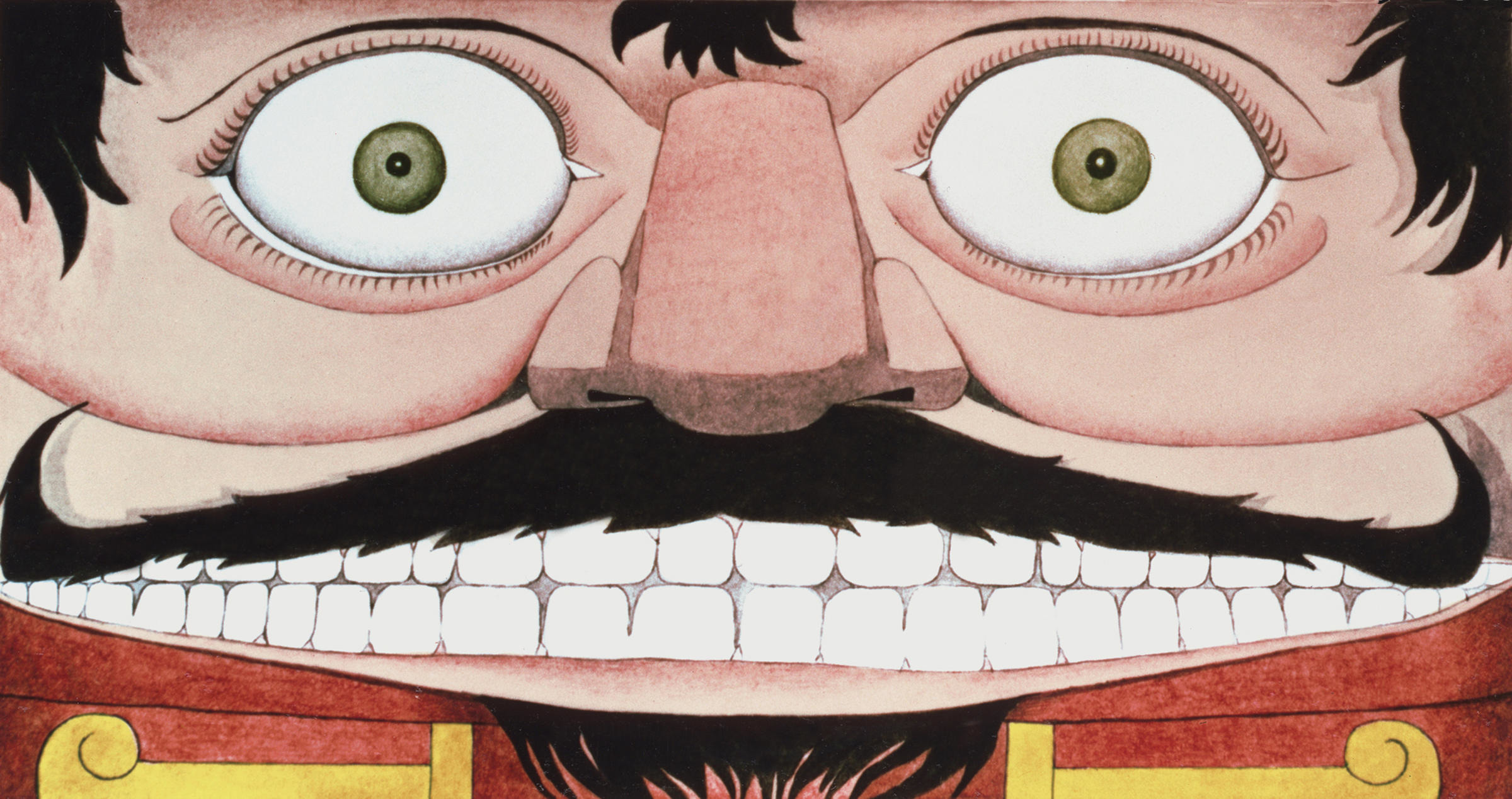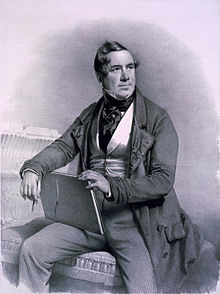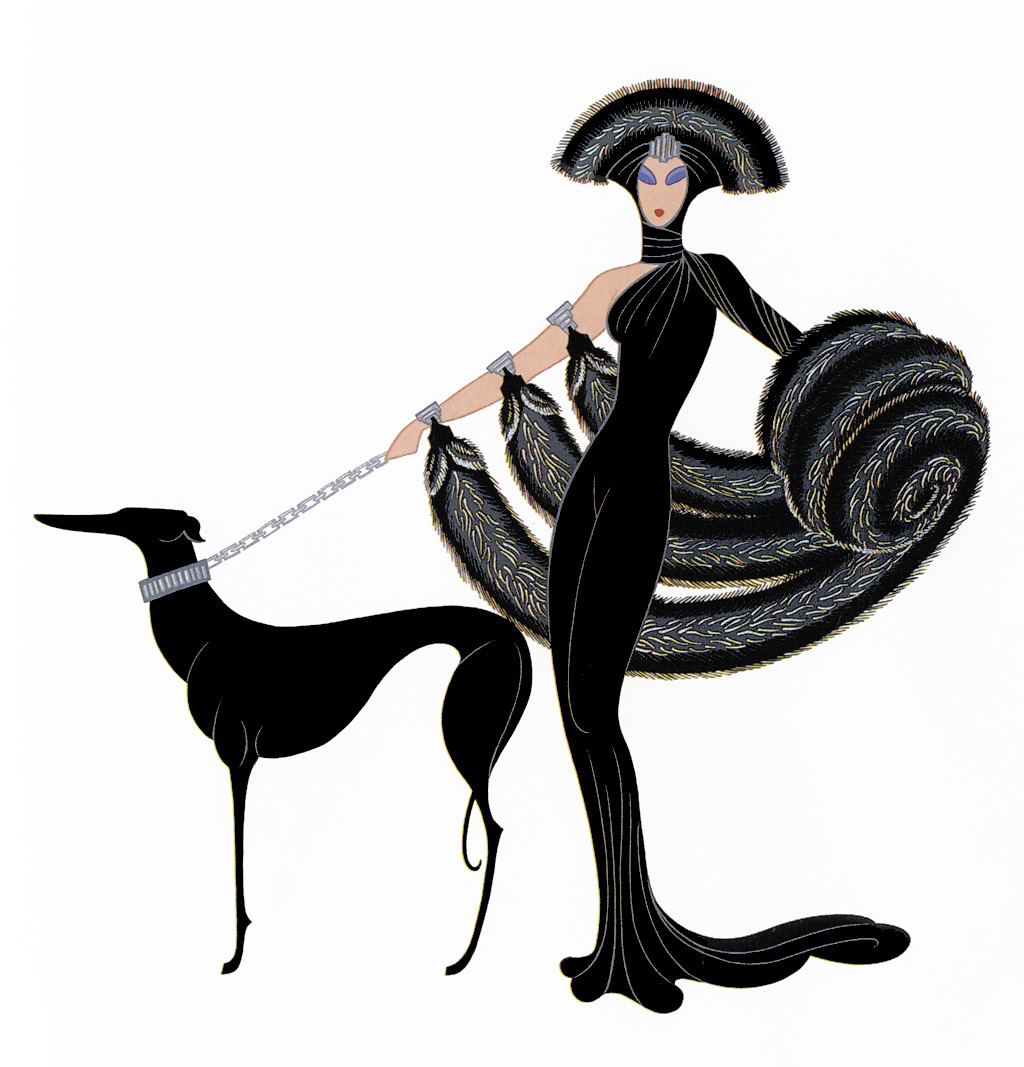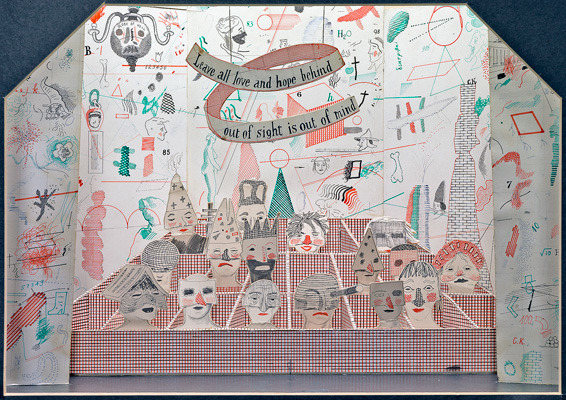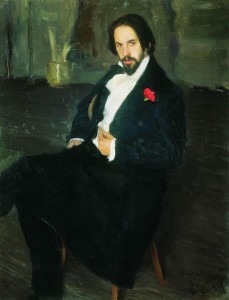
Portrait of Ivan Bilibin by Boris Kustodiev, 1901
His first illustrations were commissioned by the Russian government for a series of Russian folk story books. His illustrations of Russian folk tales include many stories that were later part of the Russian musical heritage, such as this illustration of Koshchei the Deathless, who appears in Stravinsky’s Firebird as a villain as well as being the subject an opera by Rimsky-Korsakov.
Stravinsky: The Firebird (1910): Scene 1: Infernal Dance of Kastchei and his subjects under the Firebird’s magic spell (London Symphony Orchestra; Antal Dorati, cond.)
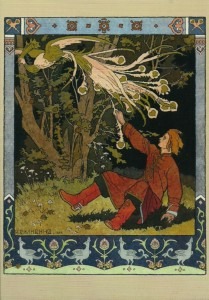
Bilibin: Ivan Tsarevich catching the Firebird’s feather
Mussorgsky: Pictures at an Exhibition: IX. The Hut on Fowl’s Legs (Baba-Yaga) (orch. L. Funtek and S. Gorchakov) (Toronto Symphony Orchestra; Jukka-Pekka Saraste, cond.)
In opera, he designed the sets for a 1908 production of Mussorgsky’s Boris Godunov for the Grand-Opera in Paris, produced by Serge Diaghilev, and this brought him to the world’s notice.
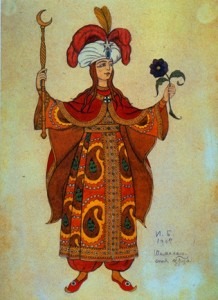
The Shemakha Queen. Costume design for Rimsky-Korsakov’s The Golden Cockerel, 1909.
More importantly, he designed the 1909 première of Rimsky-Korsakov’s The Golden Cockerel at the Solodovnikov Theatre in Moscow. He had originally illustrated Pushkin’s story in book form in 1906
Rimsky-Korsakov: The Golden Cockerel: Introduction – The astrologers enter (Sofia National Opera Orchestra; Dimitur Manolov, cond.)
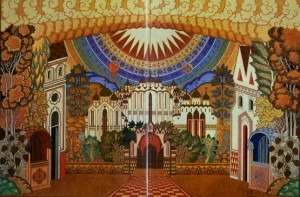
Kitezh Transformed. Stage-set design for Scene Two, Act Four of Rimsky-Korsakov’s The Tale of the Invisible City of Kitezh and the Maiden Fevronia, 1929.
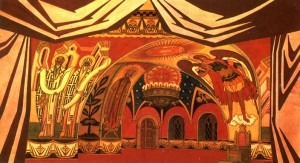
The Chambers In The Tsar’s Tower. Stage-set design for Act Four of Rimsky-Korsakov’s The Tale of Tsar Saltan, 1930
Rimsky-Korsakov: The Tale of Tsar Saltan Suite, Op. 57: III. The Three Wonders (Seattle Symphony Orchestra; Gerard Schwarz, cond.)

The Boyar. Costume design for Rimsky-Korsakov’s The Tale of Tsar Saltan, 1936.
We can see in these stage designs the same kind of detailed imagery that appeared in his illustrations. He not only developed his own Russian folkloric style but also brought Japanese imagery into his art. As we know from other artists, the effect of the Japonism movements in Europe affected art (Van Gogh), music (Debussy), and other designs in general. In taking it into Russia, Bilibin enriched the language of art. Bilibin perished in 1942 during the Siege of Leningrad.

